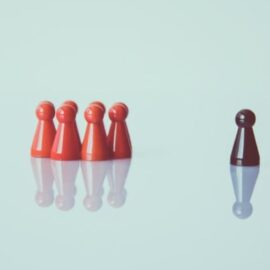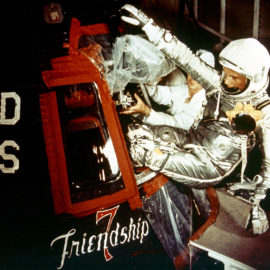

This article is an excerpt from the Shortform book guide to "Thank You for Being Late" by Thomas L. Friedman. Shortform has the world's best summaries and analyses of books you should be reading.
Like this article? Sign up for a free trial here .
Do you feel like the world is changing so fast that you can’t keep up with new developments? How does one even keep up with such an exponential pace of change?
Today, the world is accelerating at a pace never seen before, which results in many people feeling destabilized or lost. In these ever-changing times, the best thing we can do to feel more stable is to take a moment to reflect and reorient ourselves.
In this article, we’ll discuss the state of the world today, how today’s conditions arose, and what we can do to keep up with the pace of change.
How Today’s Conditions Arose: The Pace of Change
A thousand years ago, the world changed gradually. Someone could live their entire life without seeing any major inventions or overhauls to society, and when there was a change, humans had two to three generations to adapt before the next change came along. Additionally, changes took a long time to spread across the globe. Changes happened first in major cities and then spread to the countryside and only years later made it to other parts of the world.
- For example, there were hundreds of years between the invention of the longbow and its use in the military.
By the 1900s, however, the rate of change increased and it was only taking 20-30 years for the world to be noticeably different. It took people around a generation to adapt.
- (Shortform example: The airplane was invented in the early 1900s and by the mid-1950s, air travel was commonplace. The invention of the airplane on its own was a major change, but it also made it easier for changes to travel quickly around the world, increasing the pace of change globally.)
In 2007, the rate of change exploded. The costs of using mobile data fell, internet speeds increased, and mobile data advanced enough that more people wanted to use it. The iPhone was invented, Facebook opened to the general public and became popular globally, and the first cognitive computer was invented.
By 2016, it was taking only five to seven years for the world to be noticeably different. It takes humans 10-15 years to adapt, so by the time we adapt, whatever it was we adapted to will have already disappeared and been replaced by something newer.
- For example, in the US, the patent system was developed in the late 1700s. It could take four to five years to get a patent, and after it was issued, the patent-holder had 20 years of monopoly on the idea before she had to share it. Now, however, since a new technology can be out of date in four years, patents are far less relevant.
As you can see from the timeline above, the world changes at an accelerating, exponential pace, which means the pace increases with time. The state of the world today is very different from what it was 10 years ago. With the pace of change accelerating at such an insane, how can we adapt?
To understand an exponential pace, imagine that a car is driving down a road at 30 mph, but also imagine that it doubles its speed every 10 minutes. After the first ten minutes, it will have covered 5 miles. In the second ten minutes, it will speed up to 60 mph and cover 10 miles. In the third 10 minutes, it will speed up to 120 mph and cover 20 miles. After half an hour, the car has gone 35 miles.
To imagine this exponential change in terms of technology, let’s compare the specs of a 1971 Intel microchip to today’s Intel Core processor. Today’s version is 60,000 times cheaper, performs 3,500 times better, and is almost 100,000 times more energy-efficient. If you applied this same growth to a 1971 Volkswagen Beetle, it would cost 4 cents, go 300,000 miles per hour, and have an energy efficiency of two million miles per gallon.
Humanity, on the other hand, adapts to change at a more or less constant, linear pace, which means the pace stays the same no matter how much time passes. To understand a linear pace, recall that car driving down a road. Because the pace never changes, the car will keep traveling at the speed it started at, 30 mph, for all time. In the first 10 minutes, it covers five miles. In the second 10 minutes, it still only covers five miles. In the third 10 minutes, it covers another five miles. After half an hour, the car has gone 15 miles.
Over time, humanity has increased its speed of adaptation due to greater literacy and the ability to share information. However, in general, the world’s ability to change still outpaces our ability to adapt to that change.
This mismatch causes several problems:
- We feel cultural angst—we feel dislocated, disoriented, lost, and constantly behind.
- For example, faced with a wave of immigration, some countries want to shut their borders to keep things the way they used to be.
- We can’t benefit from the new technology.
- (Shortform example: Computers were invented before courses on how to use computers were developed. As a result, it took time before the average person could effectively use a computer.)
- We can’t make laws fast enough to keep up with inventions.
- For example, by the time the world figures out how to regulate ride-sharing companies such as Uber, self-driving cars will be the norm and none of the ride-sharing regulations will be relevant anymore.

———End of Preview———
Like what you just read? Read the rest of the world's best book summary and analysis of Thomas L. Friedman's "Thank You for Being Late" at Shortform .
Here's what you'll find in our full Thank You for Being Late summary :
- The problems that arise when the world changes faster than humanity can adapt
- How to adapt to technology, globalization, and climate change
- The importance of taking time to reflect and reorient






